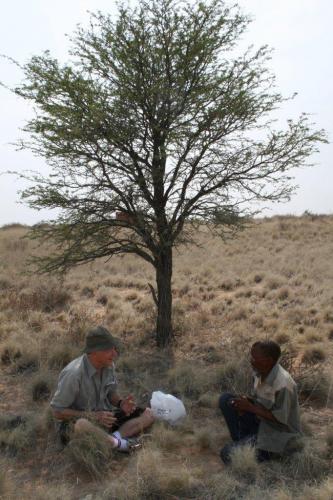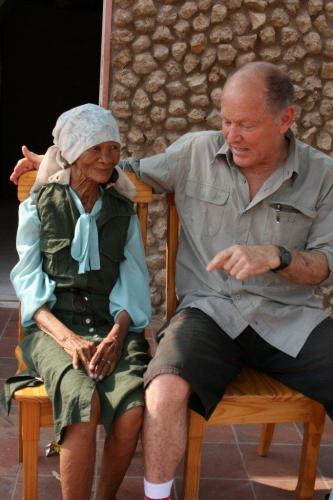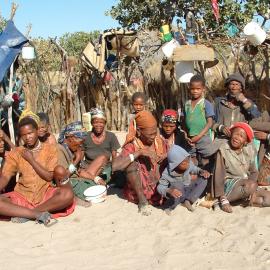What are the particular problems and concerns faced by Indigenous peoples in the era of human population genetic research (HPGR)? This topic, explored in my Ph.D. dissertation (2014), is the focus of this essay.
HPGR aims to understand the nature and extent of genetic variation among a population or individuals across different groups (UNESCO 1995) and it relies upon the large-scale collection of genetic, genealogical, and medical data from many individuals (Greely 2000: 157). Indigenous peoples are of particular value in HPGR, partly due to their relatively isolated genetic history.
Unlike the exchange of plant and animal biogenetic resources, which are regulated through the legal framework of the Convention on Biological Diversity, there is a legal and ethical vacuum in global health and research frameworks. This creates a greater possibility of risk of exploitation of vulnerable populations providing DNA samples for research.
 The concept of exploitation is central to notions of unfair appropriation (see Arnason 2006, Carling 1998, Hawkins and Emanuel 2004, Wertheimer 1996). Three forms of exploitation are identified by Mayer (2007): 1) where exploiters do not benefit their victims at all (the free rider); 2) where they do not benefit them sufficiently (an unfair exchange); and 3) where they do not benefit them authentically (an illegal or highly immoral transaction, such as taking samples contrary to the culture and wishes of a community). Numerous examples of problematic or potentially exploitative exchanges in genetic research have been documented, some of the more famous cases involving the Havasupai (Arizona, U.S.A.), the Hagahai (New Guinea), the Nuu-cha-Nulth (Vancouver Island, Canada), and the San peoples (southern Africa).
The concept of exploitation is central to notions of unfair appropriation (see Arnason 2006, Carling 1998, Hawkins and Emanuel 2004, Wertheimer 1996). Three forms of exploitation are identified by Mayer (2007): 1) where exploiters do not benefit their victims at all (the free rider); 2) where they do not benefit them sufficiently (an unfair exchange); and 3) where they do not benefit them authentically (an illegal or highly immoral transaction, such as taking samples contrary to the culture and wishes of a community). Numerous examples of problematic or potentially exploitative exchanges in genetic research have been documented, some of the more famous cases involving the Havasupai (Arizona, U.S.A.), the Hagahai (New Guinea), the Nuu-cha-Nulth (Vancouver Island, Canada), and the San peoples (southern Africa).
Risks & Cultural Harm
A number of concerns about genomic research have been expressed by individuals and communities, related to privacy (Ginsburg 1999), discrimination and stigmatization (Spaak, 2006), commodification and patenting of tissue (Caulfield 2003), amongst others. These apprehensions are often exacerbated by differences in Indigenous and western worldviews and a lack of trust of the modern research agenda (Kowal 2012; Reilly 1998; Weijer 1996, 1999, 2000).
Genetic information discloses information not only about the subject, but also his or her group, family, and community (Annas et al. 1995: 360). In Australia, the publication of a genome sequence taken from a tuft of human hair from an Aboriginal man in the early 1920s resulted in a number of bioethical dilemmas, including questions as to whether and what form of consent should be sought, and if so from which modern group of Aborigines. As stated by Hank Greely, “in a sense, every Aboriginal Australian had something about themselves revealed to the world without their consent” (Callaway 2011: 522). In other cases, research publications that state that Ashkenazi Jews’ are particularly vulnerable to cancer, or that American Indians are prone to alcoholism (Annas et al. 1995: 363), or that African Americans have a gene associated with sickle-cell disease (Foster et al. 1999: 1719), implicate members of those groups even if they did not participate in or give consent for genetic research.
Culture is a broad and multifaceted component of Indigenous or other group identity, which can suffer a form of internal harm following genetic research. A community’s culture, which includes self-perceptions, spiritual traditions, belief and knowledge systems, as well as historical narratives, have been shown to be amongst the most sensitive elements impacted by genetic research. Population genetics can have legal implications for a tribe’s standing and relationship to the land, change perceptions of relationships to other groups, and effect collective notions of ancestry and identity in different ways (Sharp & Foster 2002: 147).
For example, migration patterns, often a sacred part of Indigenous belief systems, can be brought into question by genetic research, posing deep problems for the community (Tsosie & McGregor 2007: 352). In the Havasupai case, unauthorised research recorded the tribe as originating from Asia and migrating across the Bering Strait, a narrative contradictory to their own cultural beliefs on identity and origin (Drabiak-Syed 2010: 217). When questioned about this research, Therese Markow, the original researcher in this case, stated that it never occurred to her that this theory might be upsetting to the tribe (p. 219). She defended the publication of this migration research on the grounds that such information was “good science” and of “public benefit” (Hart & Sobraske 2003: 87). A New York Times editorial later explained that the Bering Strait theory ran contrary to the Havasupai’s “traditional myths,” emphasizing the journalist’s failure to understand the cultural system of the Havasupai (Drabiak-Syed 2010: 219). Science, in the hands of the dominant culture, claims to be neutral but can be used by researchers in ways that are not always acceptable to Indigenous peoples. In the Havasupai case, the scientists claimed that their pursuit of knowledge was for the public good, but the process proved to be harmful for the tribe.
 Genetics is also increasingly being used to demonstrate nativeness, and the state relies upon genetics in land claims and other disputes of rights in order to determine whether applicants meet a certain “socially constructed image of the Indian” (McCulloch & Wilkins 1995). The Mashpee Tribe of Massachusetts, for example, tried for 32 years to obtain recognition, which was refused after DNA studies revealed a mixed ancestry unsupportive of their identity claim (Pullman & Nicholas 2011). Federal recognition was finally granted in 2007.
Genetics is also increasingly being used to demonstrate nativeness, and the state relies upon genetics in land claims and other disputes of rights in order to determine whether applicants meet a certain “socially constructed image of the Indian” (McCulloch & Wilkins 1995). The Mashpee Tribe of Massachusetts, for example, tried for 32 years to obtain recognition, which was refused after DNA studies revealed a mixed ancestry unsupportive of their identity claim (Pullman & Nicholas 2011). Federal recognition was finally granted in 2007.
When the 9,000-year-old Kennewick Man was discovered in Washington State in 1996, assumptions of his identity as Native American were followed by unsuccessful tribal attempts to claim the remains. The state ordered genetic testing to establish the body’s cultural affiliation. When the results were found to be inconclusive, the remains were ordered to be stored at the Washington University’s Burke Museum (Reardon & Tallbear 2012: 240). Subsequent testing revealed that Kennewick Man very likely was a Native American (Winter 2015). In another case, a corpse preserved for approximately 10,000 years in the ice was discovered by the Tlingit tribe of the Prince of Wales Island in Alaska. DNA was extracted from the body and 230 Native Alaskans voluntarily participated in a study to establish its identity as well as early population settlement patterns (Kemp 2007). Agreeing to take part in such studies can sometimes lead to unpopular conclusions or unanticipated consequences.
Ownership & Access
Indigenous peoples are well on their way to taking ownership over their approach to and participation in genetic research. In doing so, they examine the particular risks which are attendant on such research. A number of legislative and regulatory measures have attempted to address the new risks and challenges arising from genetic research, such as the United States’ Genetic Information Non-discrimination Act of 2008, which deals inter alia with concerns that employers or insurers might use genetic information to discriminate against certain groups. Despite such efforts to adjust to the dangers arising from genetic research, it is a legitimate concern that, in much of the world, regulatory standards remain largely focussed on individual rights and do not yet adequately protect groups or collectives (Sharp & Foster 2002: 115).
Indigenous activist organisations such as the Indigenous Peoples Council against Biocolonialism (IPCB) have stated that human genetic resources constitute a sovereign cultural property of communities, which forms part of a legal property regime (Harry & Kanehe 2006).
Other Indigenous organisations have made similar ownership claims regarding genetic resources, as did the Mataatua Declaration on Cultural and Intellectual Property Rights of Indigenous Peoples of 1993, which was passed by a plenary of delegates of Ainu from Japan, and others from Australia, the Cook Islands, Fiji, India, Panama, Peru, Phillippines, Surinam, the United States and Aotearoa (New Zealand) (Mead & Ratuva, 2007). These declarations of right have, however, been ineffective in securing increased tribal control of samples and data (Reardon & Tallbear, 2012 p.341). Pullman and Nicholas argue strongly against such cultural appropriation by tribes of genetic resources, as well as against placing such cultural property under the dictates and strictures of a property law system. They argue that human DNA need not be treated as exceptional, that no special rules need to be applied, and that research involving DNA should be subject to the common principles of research ethics (Pullman & Nicholas, 2011). They warn in addition about the potential of such approaches to conflate the ambiguous and flexible concept of culture with biology (p.157).
An additional on-going ethical debate surrounds the question of who has the right to control access to ancient DNA, which may have serious implications on the origins, identity and cultural narrative held by Indigenous peoples (Carlyle, 2005). Body parts and DNA stored in museums is sometimes repatriated to the respective communities, but as stated by Kowal, the British Museum in London generally excludes hair and nails from its repatriation policy, which are a valuable tool for examining human genomes (cited in Callaway 2011: 523).
The view that genetic knowledge is an objective neutral good that benefits all is not equally held or shared by Indigenous peoples, for whom the right to control their own culture and identity remains crucial (Reardon & Tallbear 2012: 240).
Photos: A San group in the CKGR (Central Kalahari Game Reserve), Botswana; Roger and Dawid Kruiper, a famous !Khomani leader who died last year; Roger with San elder /Una Kassi (all photos courtesy Roger Chennells).
References Cited
Annas, G. 1993. Privacy Rules for DNA Databanks: Protecting Coded ‘future diaries’. The Journal of American Medical Association 270(19): 2346-2350.
Arnason, V. 2006. Coding and Consent. Moral Challenges of the Database Project in Iceland. Bioethics 18: 36-61.
Callaway, E. 2011. Aboriginal Genome Analysis comes to grips with Ethics. Nature 477: 522-523.
Carling, Alan. 1998. Exploitation. Encyclopedia of Applied Ethics 2: Volume 2.
Carlyle, S.W. 2005. Discerning the Origins of the Anasazi with mtDNA Haplogroups. In Biomolecular Archaeology: Genetic Approaches to the Past, edited by D.M. Reed, pp. 93-127. Southern Illinois University, Carbondale.
Caulfield, T.A. 2003. Genetic Technologies, Health Care Policy and the Patent Bargain. Clinical Genetics 63(1): 15-18.
Chennells, R. 2014. Equitable Access to Human Biological Resources in Developing Countries: Benefit Sharing Without Undue Inducement. Ph.D. Dissertation. School of Health, University of Central Lancashire.
Drabiak-Syed, K. 2010. Lessons from Havasupai Tribe v Arizona State University Board of Regents; Recognising Group, Cultural and Dignitary Harms as Legitimate Risks Warranting Integration into Research Practice. Journal of Health and Biomedical Law VI: 175-225.
Foster, M.W., Sharp, R.R., et al. 1999. The Role of Community Review in Evaluating the Risks of Human Genetic Variation Research. American Journal of Human Genetics 64: 1719-1727.
Ginsburg, D.H. 1999. Genetics and Privacy. Texas Review of Law and Politics 4: 17-23.
Hart, S., and K.A. Sobraskne. 2003. Investigative Report concerning the Medical Genetics Project at Havasupai. December 23. Arizona State University, Ross-Baker Law Library, Reserves. [http://www.tandfonline.com/doi/abs/10.1080/21507716.2013.770104?journalCode=uabr20]
Greely, H.T. 2000. Iceland’s Plan for Genomics Research: Facts and Implications. Jurimetrics 40(2): 153-191.
Harry, D., and le’a Malia Kanehe, 2005. The BS in Access and Benefit Sharing (ABS) Critical Questions for Indigenous Peoples. In The Catch: Perspectives in Benefit Sharing, edited by B. Burrows, pp. 88-120. Edmonds Institute, Washington.
Hawkins, J., and E.J. Emanuel. 2004. Exploitation and Developing Countries: The Ethics of Clinical Research. Princeton University Press, New Jersey.
Kemp, B.M. 2007. Genetic Analysis of Early Holocene Skeletal Remains from Alaska and its Implications for the Settlement of the Americas. American Journal of Physical Anthropology 132: 605-621.
Mayer, R. 2007. ‘What’s Wrong with Exploitation?’ Journal of Applied Philosophy 24(2): 137–150.
McCulloch, A., and D. Wilkins. 1995. “Constructing” Nations within States: The Quest for Federal Recognition by the Catawba and Lumbee Tribes. American Indian Quarterly 19(3): 361–388.
McGregor, J.L. 2007. Population Genomics and Research Ethics with Socially identifiable Groups. Journal of Law, Medicine and Ethics 35: 356-370
Pullman, D., and G. Nicholas. 2011. Intellectual Property and the Ethical/Legal Status of Human DNA: The (Ir)relevance of Context. Inuit Studies 35(1&2): 143-164.
Reardon, J., and K. Tallbear. 2012. Your DNA is Our History: Genomics, Anthropology and the Construction of Whiteness as Property. Current Anthropology 53(supplement 5): 233-245
Reilly, PR. 1998. Rethinking Risks to Human Subjects in Genetic Research. American Journal of Human Genetics 63: 682-685
Sharp, R., and M.W. Foster. 2002. Community Involvement in the Ethical Review of Genetic Research: Lessons from American Indian and Alaska Native Populations. Environmental Health Perspectives 110(supplement 2): 145-148
Spaak, T. 2006. Genetic Discrimination. Minnesota Journal of Law, Science Technology 7: 639-655.
UNESCO. 1995. International Bioethics Committee. Bioethics and Human Population Genetics Research. Paris, France, 15 November.
Weijer, C. 1999. Protecting Communities in Research: Philosophical and Pragmatic Challenges. Cambridge Quarterly for Healthcare Ethics 8: 503-513
Weijer, C. 2000a. The Ethical Analysis of Risk. Journal of Law, Medicine and Ethics 28: 344-361
Weijer, C. 2000b. Benefit Sharing and Other Protections for Communities in Genetic Research. Clinical Genetics 58(L5): 367-368
Weijer, C. and P.B. Miller. 2004. Protecting Communities in Pharmacogenetic and Pharmacogenomic Research. The Pharmacogenomics Journal 4: 9-6.
Wertheimer, A. 1996. Exploitation. Princeton, Princeton University Press.
Winter , Lisa. 2015. DNA Results Suggest Kennewick Man Was Native American. IFL Science.
Other Suggested Reading
Walker, Alexa, and George Nicholas, et. al. 2014. Fact Sheet on Ancient DNA. IPinCH.
Owsley, Douglas W. and Richard L. Jantz (eds.). 2014. Kennewick Man: The Scientific Investigation of an Ancient American Skeleton. Texas A&M University Press, College Station, Texas.
Roger Chennells is a founding partner of Chennells Albertyn Attorneys and an IPinCH Associate.
Our Appropriation (?) of the Month features, written by IPinCH team members, highlight the complexity of 'cultural appropriation' and 'cultural appreciation'.






